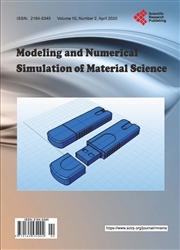Comparative Study of Lead-Free Perovskite Solar Cells Using Different Hole Transporter Materials
引用次数: 33
Abstract
In recent years, there has been an unprecedented rise in the performance of metal halide perovskite solar cells. The lead-free perovskite solar cells (PSCs) have drawn much research interest due to the Pb toxicity of the lead halide perovskite. CH3NH3SnI3 is a viable alternative to CH3NH3PbX3. In this work, we designed a tin-based perovskite simulated model with the novel architecture of (TCO)/buffer (TiO2)/absorber (Perovskite)/hole transport material (HTM) and analyzed using the solar cell capacitance simulator (SCAPS-1D), which is well adapted to study the photovoltaic architectures. In the paper, we studied the influences of perovskite thickness and the doping concentration on the solar cell performance through theoretical analysis and device simulation. The results are indicating that the lead-free CH3NH3SnI3 is having the greatpotential to be an absorber layer with suitable inorganic hole transport materials like CuI (PCE: 23.25%), Cu2O (PCE: 19.17%), organic hole transport materials like spiro-OMETAD (PCE: 23.76%) and PTAA (PCE: 23.74%) to achieve high efficiency. This simulation model will become a good guide for the fabrication of high efficiency tin-based perovskite solar. The results show that the lead-free CH3NH3SnI3 is a potential environmentally friendly solar cells with high efficiency.不同空穴传输材料的无铅钙钛矿太阳能电池的比较研究
近年来,金属卤化物钙钛矿太阳能电池的性能出现了前所未有的提高。无铅钙钛矿太阳能电池由于铅卤化物钙钛矿的铅毒性而引起了人们的广泛关注。CH3NH3SnI3是CH3NH3PbX3的可行替代品。在这项工作中,我们设计了一个具有新型结构(TCO)/缓冲层(TiO2)/吸收剂(钙钛矿)/空穴传输材料(HTM)的锡基钙钛矿模拟模型,并使用太阳能电池电容模拟器(SCAPS-1D)进行了分析,该模拟器非常适合研究光伏结构。本文通过理论分析和器件模拟,研究了钙钛矿厚度和掺杂浓度对太阳能电池性能的影响。结果表明,无铅CH3NH3SnI3具有与合适的无机空穴传输材料如CuI(PCE:23.25%)、Cu2O(PCE:19.17%)、有机空穴传输材料(如spiro-OMETAD(PCE:123.76%)和PTAA(PCE=23.74%)一起成为高效吸收层的巨大潜力。该模拟模型将为制备高效锡基钙钛矿太阳能电池提供良好的指导。结果表明,无铅CH3NH3SnI3是一种潜在的高效环保太阳能电池。
本文章由计算机程序翻译,如有差异,请以英文原文为准。
求助全文
约1分钟内获得全文
求助全文

 求助内容:
求助内容: 应助结果提醒方式:
应助结果提醒方式:


